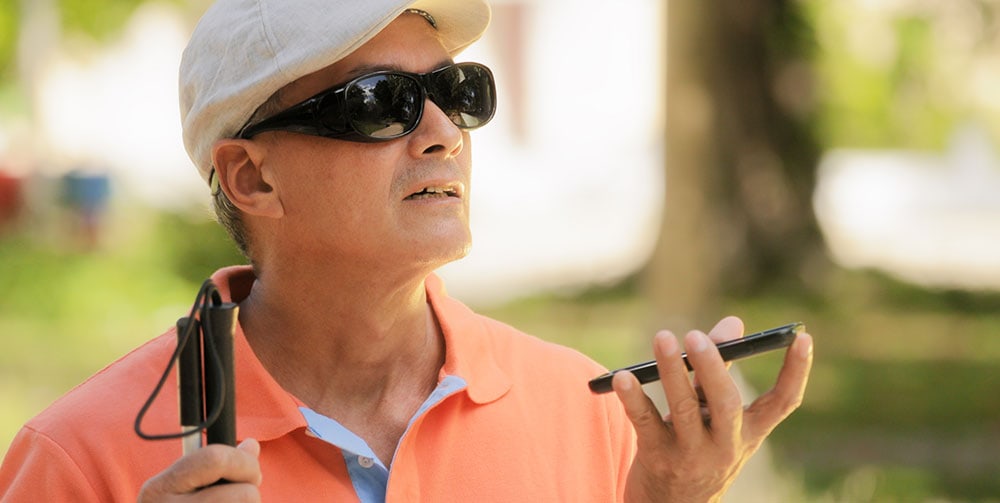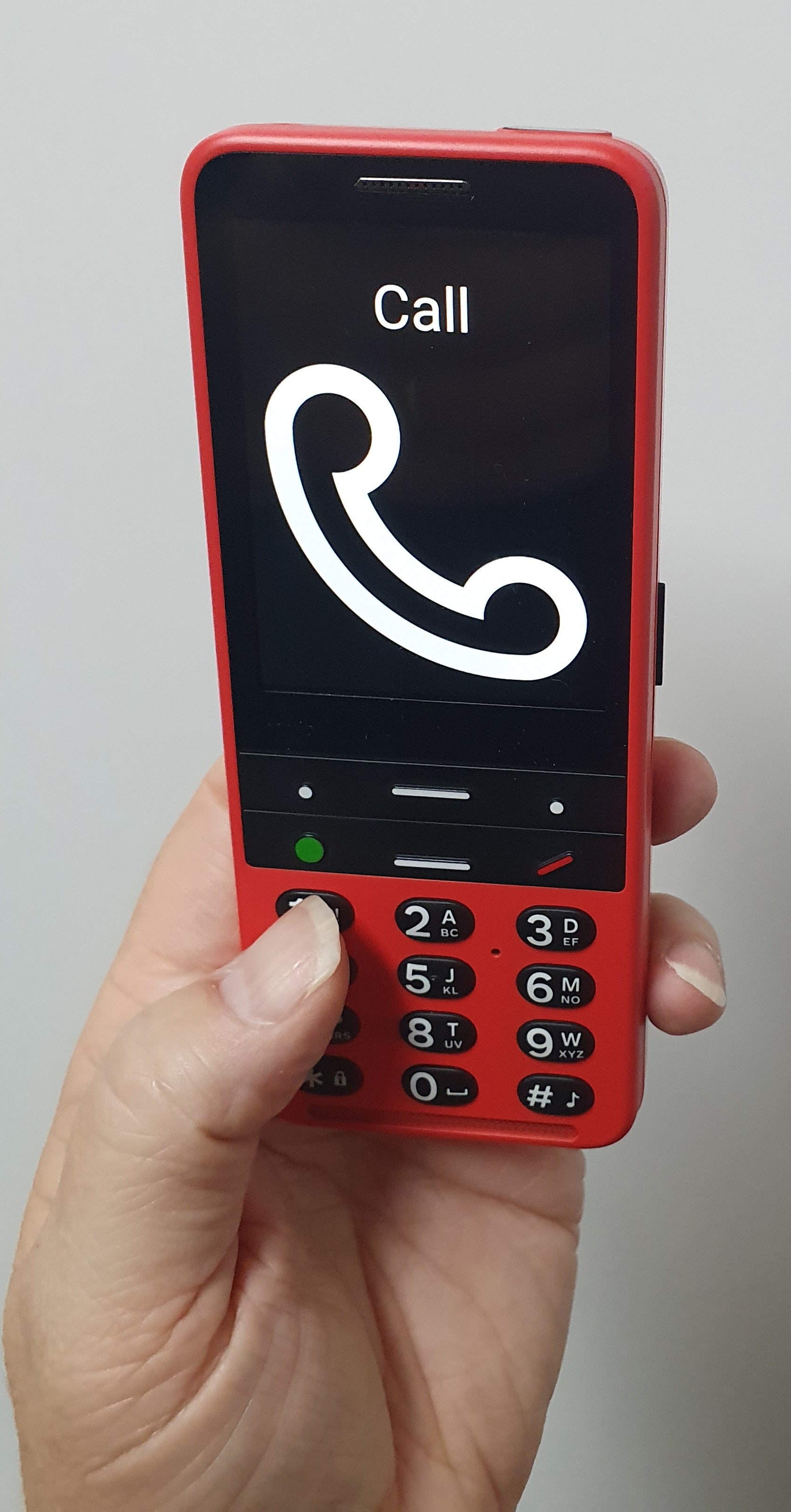Speech-to-Text Devices for Low Vision: Enhancing Convenience
Speech-to-Text Devices for Low Vision: Enhancing Convenience
Blog Article
Enhancing Lives With Advanced Assistive Gadgets for the Blind
The combination of innovative assistive devices for the blind is changing exactly how individuals experience their environments and communicate with their communities. Innovations such as increased truth clever glasses and innovative electronic travel help not only facilitate navigation however also boost general lifestyle. These modern technologies cultivate a feeling of autonomy and self-efficacy amongst customers, allowing them to carry out everyday tasks with newfound self-confidence. The ramifications of these developments extend past mere capability; they challenge societal perceptions of special needs and self-reliance. What does this advancement imply for the future of assistive technology and its duty in empowering people?
Summary of Assistive Devices
Assistive devices for the blind include a diverse array of tools and modern technologies made to boost independence and boost the lifestyle for people with visual problems. These gadgets provide to numerous needs, from navigation and mobility to communication and day-to-day job monitoring.
Among the primary groups of assistive gadgets consists of wheelchair aids, such as white canes and guide pet dogs, which help customers navigate their surroundings safely. Electronic traveling aids, geared up with sensors and audio feedback, also play a significant role in mobility improvement.
Additionally, tools that assist with daily living activities, such as flexible kitchen tools, Braille labels, and talking watches, equip people to execute tasks individually. Communication help, consisting of screen visitors and Braille displays, facilitate access to details and allow people to involve effectively with the electronic world.
Moreover, low-tech solutions like multiplying glasses and large-print products stay essential for many individuals. Collectively, these assistive tools offer not just as functional devices yet likewise as essential enablers of autonomy, cultivating greater involvement in a world that commonly prioritizes sighted experiences. Their combination right into every day life is important for promoting inclusivity and boosting overall wellness for those with aesthetic problems.
Cutting-edge Technologies in Use
Advancement in modern technology has significantly transformed the landscape of devices available for individuals with visual impairments. Amongst one of the most remarkable innovations are smart glasses incorporated with increased fact, which supply real-time navigating help and things acknowledgment. These gadgets utilize advanced cameras and expert system to provide acoustic hints, boosting the individual's spatial recognition and freedom.
In addition, mobile applications have become effective sources, allowing users to recognize money, checked out text out loud, and navigate strange settings through spoken directions. Devices such as Braille screens and refreshable Braille devices continue to advance, offering seamless connection with computers and smart devices, consequently enhancing interaction and accessibility to info.
Wearable technology, including smartwatches equipped with voice-activated functions, further empowers customers by facilitating fast accessibility to notifications and informs without requiring aesthetic interaction. Responsive maps and 3D printing are likewise obtaining traction, offering substantial depictions of areas that aid in positioning and wheelchair training.
Collectively, these cutting-edge technologies not just improve the lives of aesthetically impaired people yet also foster greater independence, inclusivity, and interaction with the wider neighborhood, consequently reshaping understandings of availability. (Speech-to-text devices for low vision)
Individual Stories of Empowerment
Empowerment usually arises from individual experiences that highlight the transformative influence of technology on people with visual impairments. Take, for example, the story of Sarah, a young artist that reclaimed her passion for painting through using a smart walking stick equipped with challenge discovery. This tool not just facilitated her flexibility yet instilled a newfound confidence, allowing her to browse public spaces separately and seek her creative endeavors.

These narratives highlight the profound effects that advanced assistive gadgets can have on life. By making it possible for people to get over obstacles, innovation promotes a sense of autonomy and self-regard. Such empowerment tales work as a testament these details to the potential of development, highlighting how the right tools can substantially improve top quality of life and open doors to brand-new possibilities for those with aesthetic problems.
Benefits of Advanced Solutions
The combination of cutting-edge technology into assistive gadgets considerably changes everyday experiences for those influenced by vision loss. Smart glasses for the visually impaired. Gadgets such as smart walking canes furnished with sensors, navigation apps, and wearable modern technology are designed to offer real-time comments, improving spatial understanding and decreasing the threats connected with wheelchair.
Additionally, advanced assistive innovations promote social addition by promoting communication and interaction. Voice-activated gadgets and apps enable individuals to access info and engage with their environments separately, damaging barriers that previously prevented their engagement in instructional, professional, and social settings.
On top of that, the customization and adaptability of these solutions deal with the varied needs of users, thereby improving their general lifestyle. Boosted performance, such as object recognition and text-to-speech capacities, encourages people with aesthetic problems to execute jobs that they might have once discovered challenging. Ultimately, advanced assistive technologies not just improve freedom and safety but also advertise self-respect and self-regard, enabling individuals to lead satisfying lives.
Future Trends in Assistive Technology
As technology remains to progress, the landscape of assistive gadgets for the blind is positioned for remarkable improvements that will certainly further enhance ease of access and freedom. Arising trends in assistive innovation indicate a change towards enhanced assimilation of synthetic intelligence (AI) and maker learning, allowing tools to adapt to private user needs in real-time. These technologies are anticipated to assist in even more intuitive navigating systems that can determine barriers and give audio responses, considerably boosting outside wheelchair.
Furthermore, the growth of wearable tech, such as clever glasses geared up with enhanced truth, will enable users to obtain contextual information concerning their surroundings, consequently improving their spatial awareness. Improvements in haptic innovation promise to create responsive feedback gadgets, enabling customers to regard details through touch, improving learning and communication with their environment.
Telecommunication advances are also leading the means for remote assistance remedies, where experienced professionals can supply advice using video phone calls, guaranteeing assistance is readily easily accessible. As these fads unfold, the future of assistive tools for the blind will unquestionably cultivate better freedom, empowering individuals to browse their globe with confidence and ease.

Verdict
The combination of advanced assistive tools for the blind stands for a considerable development in fostering freedom and enhancing lifestyle. By utilizing cutting-edge modern technologies, these tools encourage individuals to browse their atmospheres with higher self-confidence and freedom. As over here the field continues to progress, ongoing research and growth will likely yield a lot more advanced options, further changing the lived experiences of individuals with visual problems and advertising a higher sense of inclusion within culture.
The integration of sophisticated assistive tools for the blind is transforming exactly how people experience their environments and connect with their communities. The integration of sophisticated innovation right into assistive gadgets substantially changes day-to-day experiences for those influenced by vision loss.As modern technology proceeds to progress, the landscape of assistive gadgets for rimless glasses the blind is poised for amazing developments that will even more improve access and self-reliance. Emerging patterns in assistive technology suggest a change towards enhanced integration of synthetic knowledge (AI) and equipment learning, enabling devices to adjust to private user needs in real-time.The assimilation of advanced assistive tools for the blind represents a considerable development in promoting self-reliance and improving quality of life.
Report this page